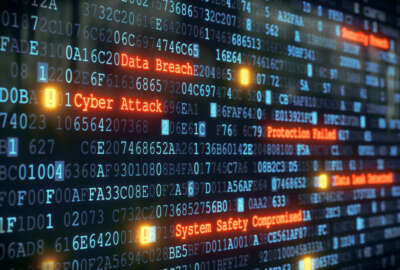Social media might be the best innovation of the century. But anyone can use it, including terrorists groups.
A phenomenon called the “cyber caliphate” is producing ever-rising levels of cyber-attacks and real-world violence as it attracts would-be terrorists and rapidly radicalizes them.
“The weaponization of social media offers wound collectors and these psychologically fractured social outcasts an invitation to self-radicalize that almost expedites their path to jihadization,” said James Scott, senior fellow at the Institute for Critical Infrastructure Technology on the Federal Drive with Tom Temin. “The thing that’s unique about cyber space is it offers a platform through this virtual, subliminal jihadization, and its a process. This is an ideological battle just as much about hearts and minds as it is to expand the Islamic State.”
Scott co-wrote “The Anatomy of Cyber-Jihad” which analyses how extremist terror groups, like al-Qaeda, Boko Haram and the Islamic State are teaching themselves how to hack to get the one-up on their enemies.
Scott said “self-radicalization” through the internet happens in two stages: first when unstable individuals come into contact with jihadist rhetoric through social media, and then later delve into the deep web for full-on terrorist activity.
“On the surface web, you have twitter, Facebook, YouTube, Vimeo—and these are solid entry points for someone that’s currently in a self-radicalizing stage, but ready to zero in on something. That’s when the jihadis get them,” he said. “The deep web is really where everything happens.”
Critical infrastructure is one of the assets at risk for cyber attacks, and agencies and organizations need to start using the cyber tools available available to them to secure it. Scott said resources like the National Institute of Standards and Technology’s SP 800-160, which layers security design principles and concepts into systems of a cyber-physical world like car GPS and power grids.
“We worked with them [NIST] to do an overview of those guidelines so we took 300-plus pages and consolidated to around 40 pages. The month that came out we received over 40,000 downloads, so CISOs are definitely looking for new standards,” he said.
While Scott’s paper focuses on how the government can prevent hack-attacks from cyber jihadists, it also mentions how the government can actively combat terrorist groups online.
“They [agencies] are going after their money, they’re going after their physical assets, taking over territory, but the thing is, for each of these actions there’s a reaction from their [terrorists] sides,” said Scott. “While cyber command will be in there shutting down or locking up…bank accounts, they [terrorist groups] are migrating over to crypto-currencies. As their surface web accounts are being shut down and monitored, they are moving towards dark web forums.”
It’s a constant game of cat and mouse, and Scott stressed it’ll only get harder as terrorist groups use more sophisticated hacking methods like spear-phishing.
“Phishing is the new fundraising mechanism substituting the 419 for ransomware,” he said. They’re not the type of spear phishing attacks with spelling errors. These are spear phishing attacks where they’ll send maybe three of four to an agency, and they’re just completely right-on.”
Scott said agency employees and managers who fall for these attacks can use primitive methods like key logging to get access to everything from personal identifying information to proprietary plans for initiatives.
“The human element will unfortunately continue to be the weakest element in cybersecurity,” he said.
According to Scott, the most important aspect for agencies fighting cyber-jihadists is developing a long-term strategy where they’ll constantly need to adapt, since what worked today likely won’t work tomorrow.
“The rules of engagement have changed. Cyberspace is definitely the new great equalizer. The internet of things is a new battlefield. Anonymizing tools are the new weapons of stealth. Malvertizing, malware, all these things are being used,” he said. “Zero day arsenals, that’s the new arms race, and the new symbols of military supremacy. It really does come down to the collective using the layered security mechanisms that are out there. They just have to be used.”
Copyright
© 2024 Federal News Network. All rights reserved. This website is not intended for users located within the European Economic Area.
